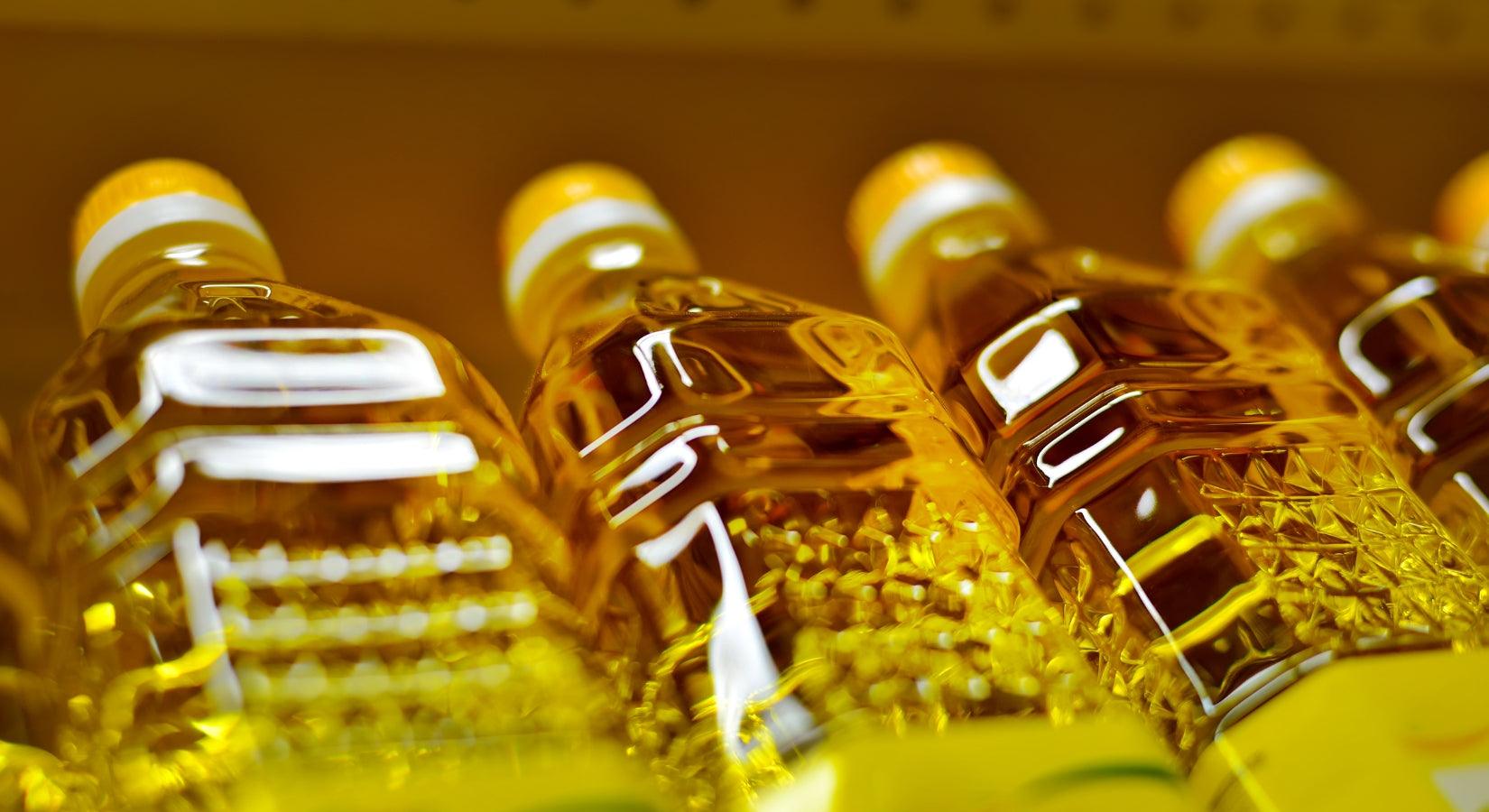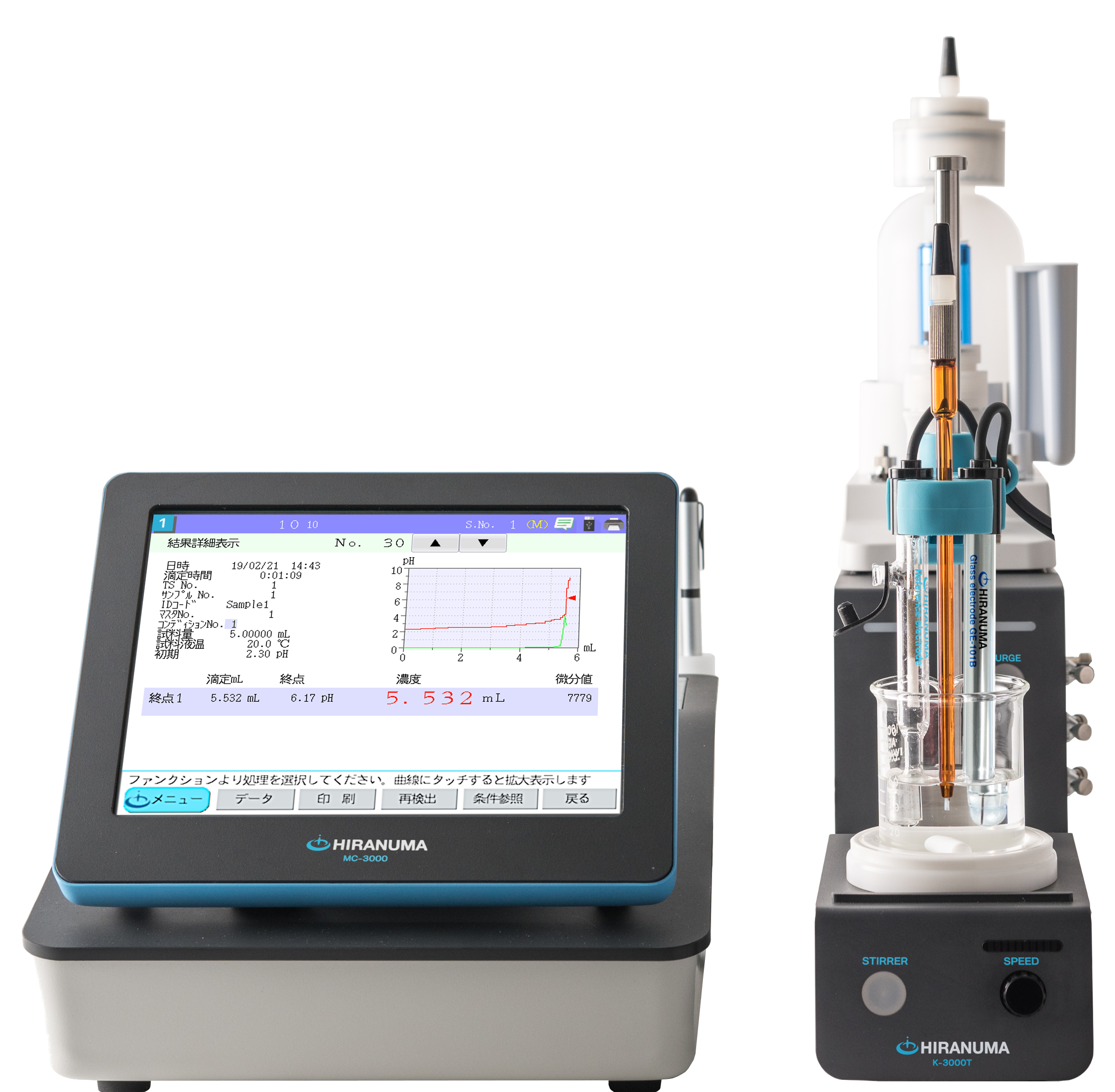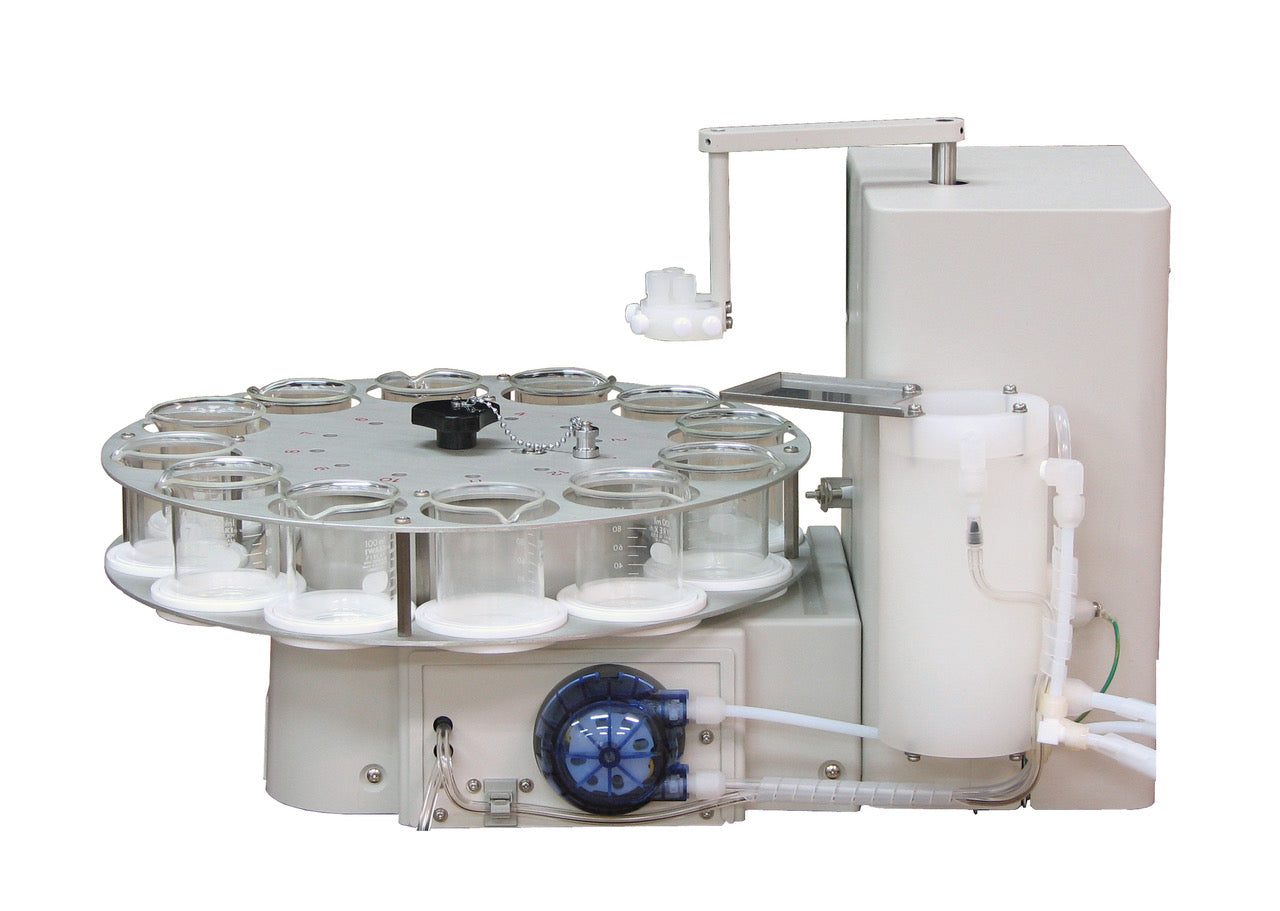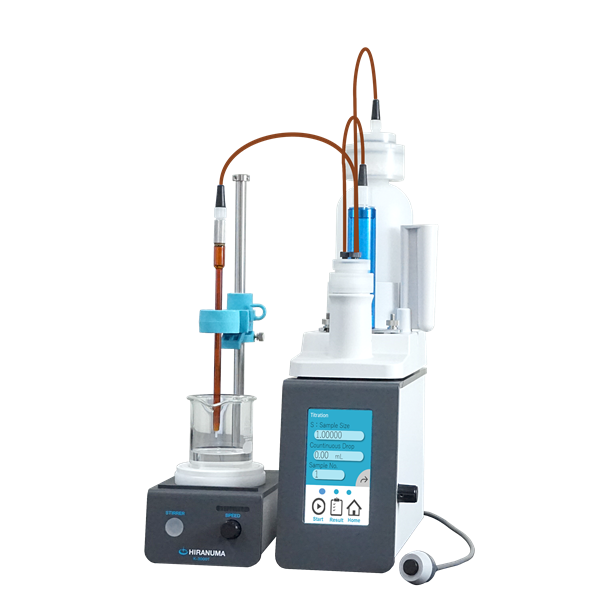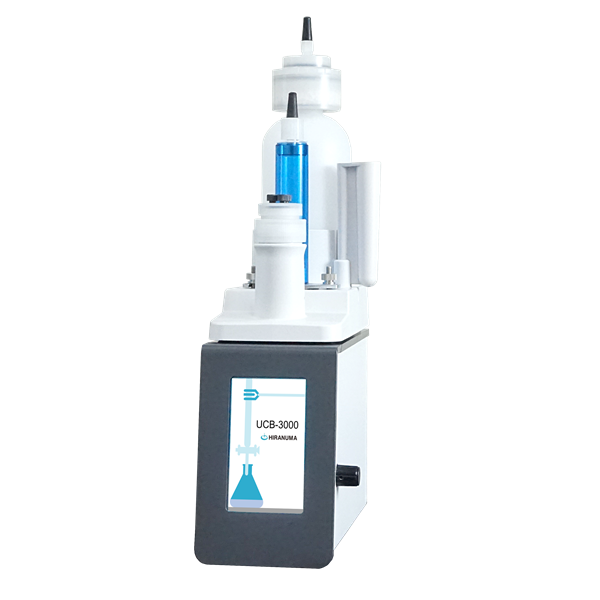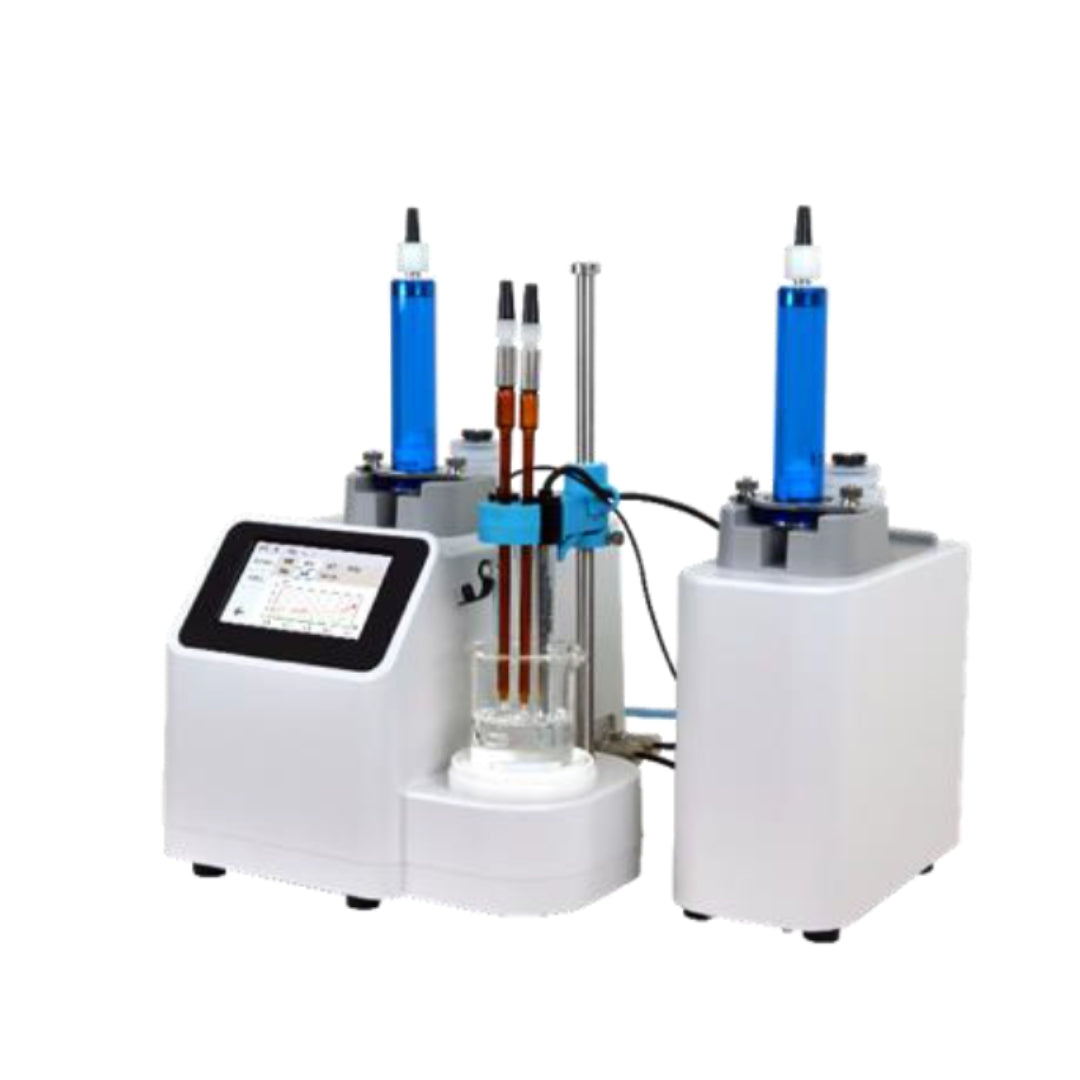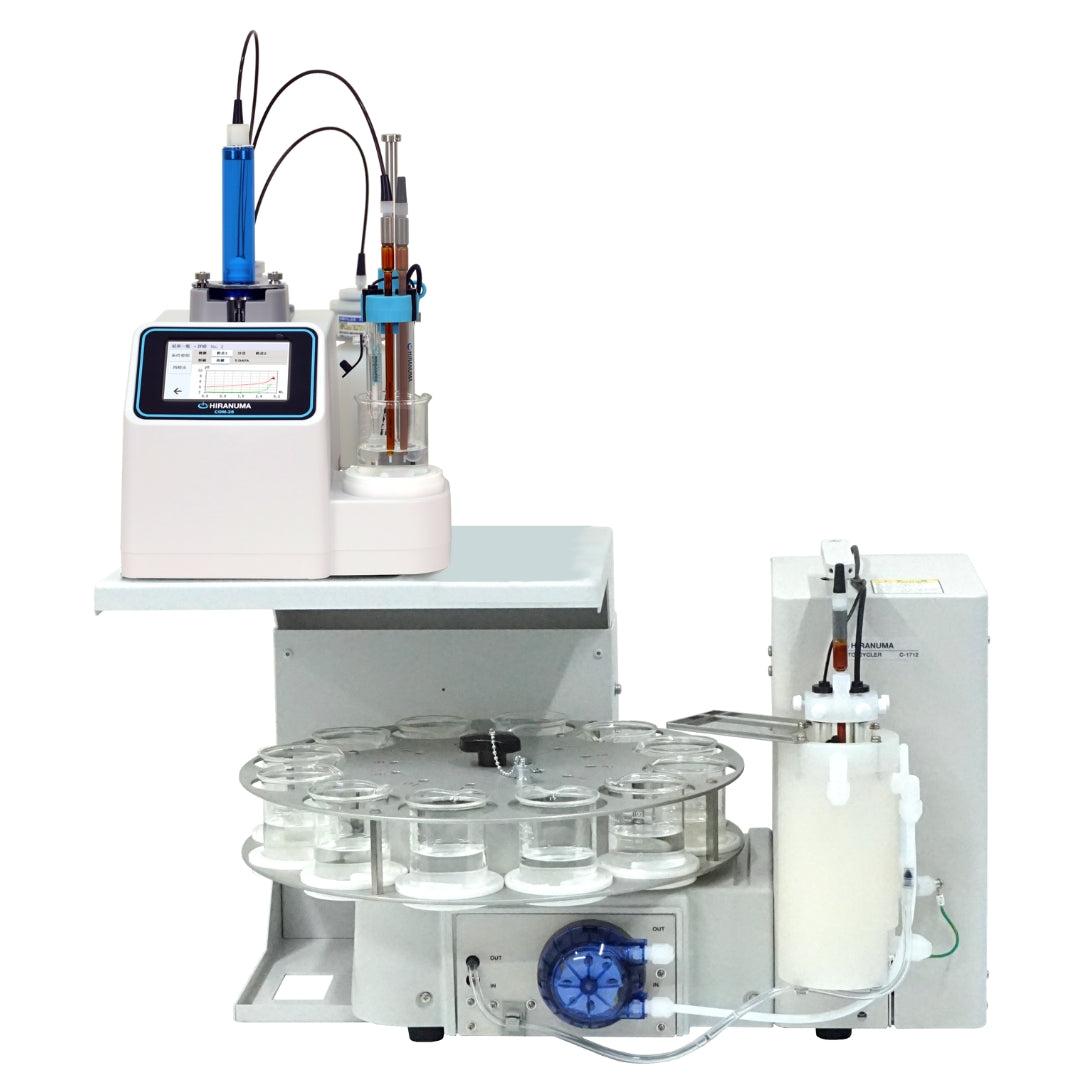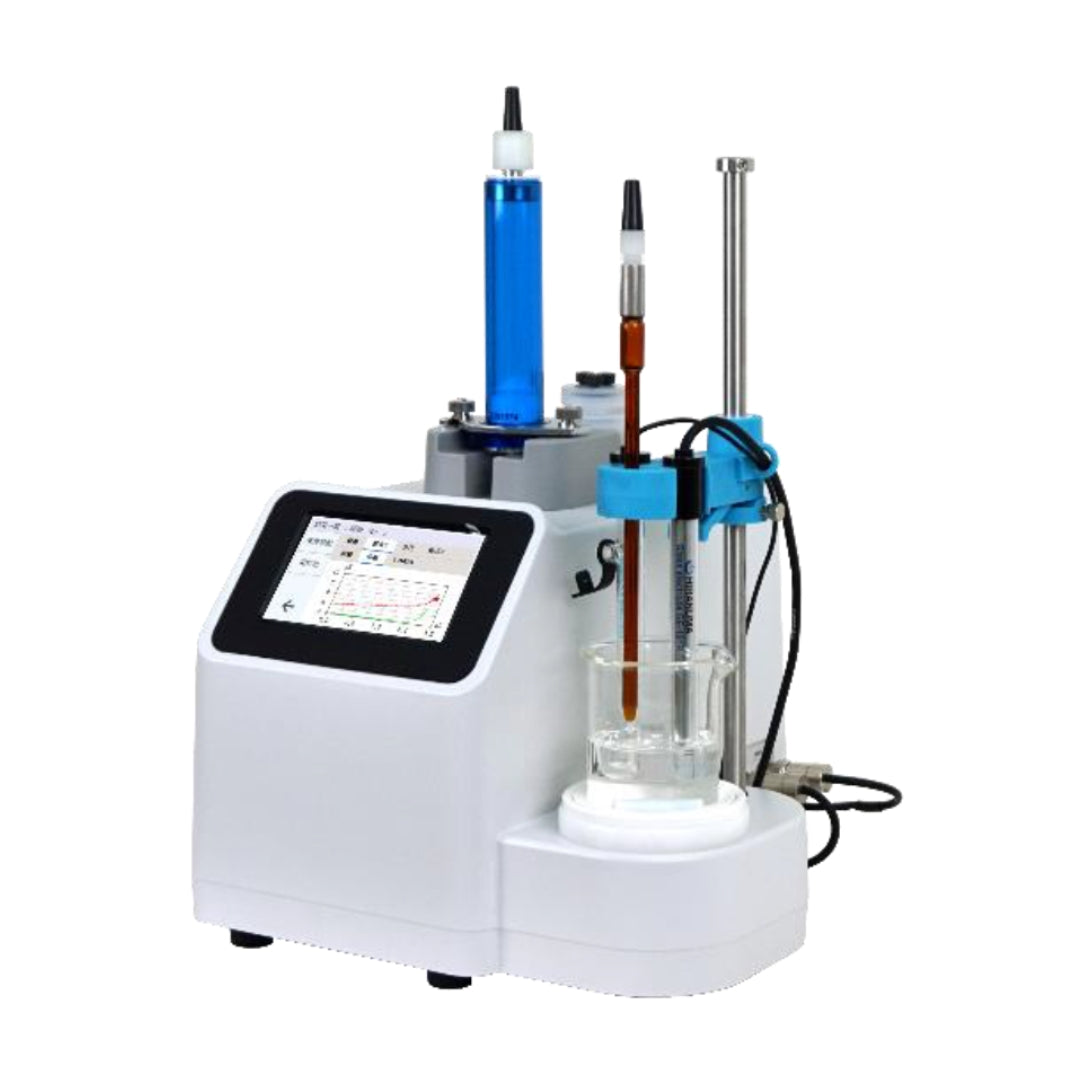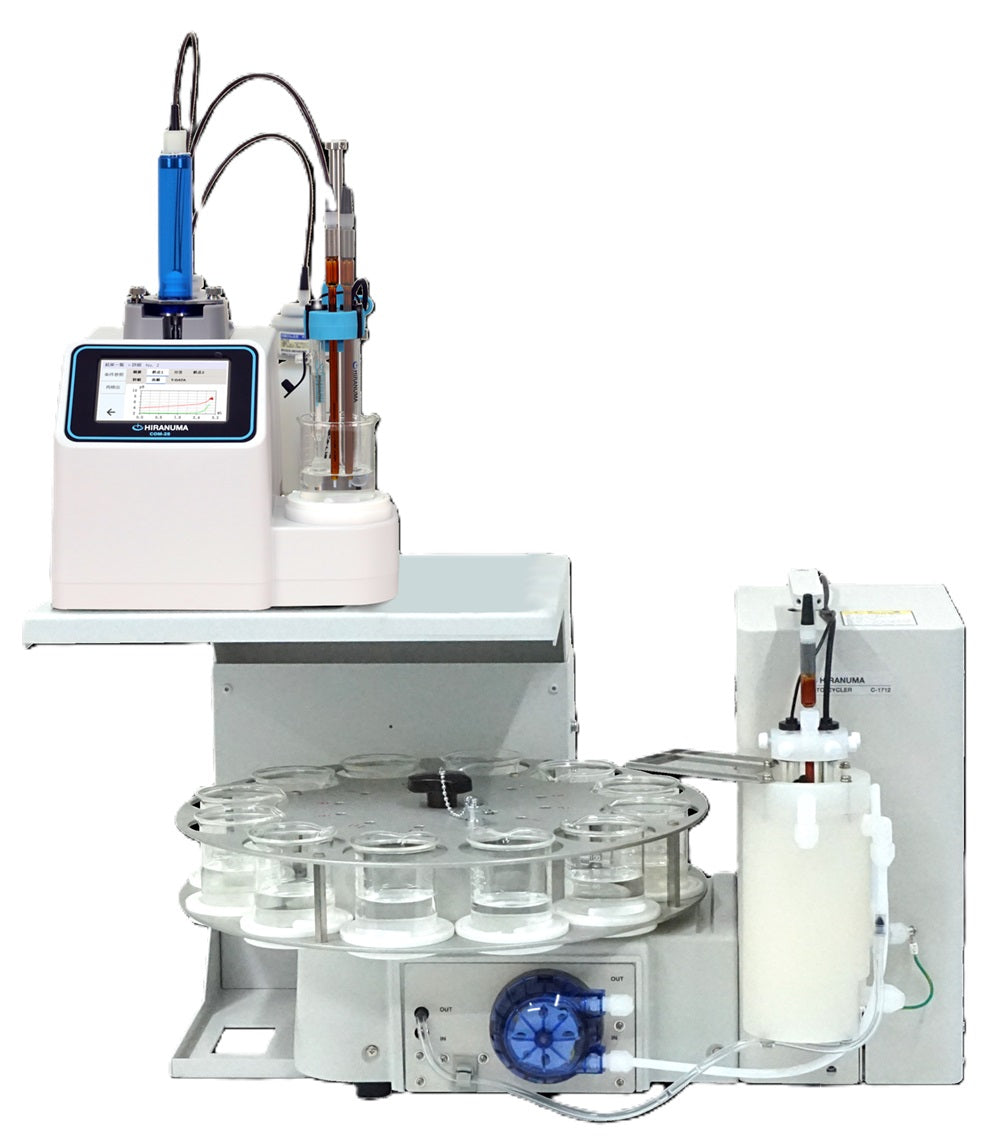| HIRANUMA APPLICATION DATA | Automatic Titrator | Data No. | A8 | Oct. 7,2022 |
| FOOD | Iodine value measurement for cooking oil |
1. Abstract
Fatty acid in cooking oil, for example, oleic acid and linoleic acid absorb one or two of iodine molecules. Other kinds of cooking oils also absorb specific amount of iodine.
Iodine value means the “g” value of halogen which adhere to 100 g of sample; it is defined as indicators for unsaturated bond components of oils and fat in Pharmacopoeias: JP, USP, and EP.
There are two kinds of measuring methods such as Hanus method and Wijs method for Iodine value measurement. The former uses iodine bromide and the latter uses iodine chloride as halogen. In this chapter, the measurement example using more popular Wijs method is introduced.
Excess ICl in regard to the number of double bond is added on Wijs method. One halogen molecule binds to double bond of oils and fat as the following formula (1).
 ・・・(1)
・・・(1)The Iodine value is determined by excessively-remained ICl which is titrated with sodium thiosulfate according to the following formula (2).
2. Configuration of instruments and Reagents
| (1) | Configuration | ||
| Main unit | : | Hiranuma Automatic Titrator COM series | |
| Electrode | : | Platinum combination reference electrode PR-733BZ | |
| Option | : | Buret tip (Tube Type) | |
| (2) | Reagents | ||
| Titrant | : | 0.1 mol/L Sodium thiosulfate standard solution | |
| Additive | : | Wijs solution 25 mL 1 mol/L Potassium iodide solution 20 mL |
|
| Solvent | : | Cyclohexane |
3. Measurement procedure
| (1) | Take about 0.25 g of the sample into an Erlenmeyer flask and weigh it accurately to 0.1 mg digits. |
| (2) | Add 20 mL of cyclohexane to dissolve sample. |
| (3) | Dispense 25 mL of Wijs solution exactly with volumetric pipette and plug it with a stopper and leave it under dark room for 30 minutes. |
| (4) | Add 20 mL of 1 mol/L potassium iodide solution and 100 mL of pure water. |
| (5) | Immerse the electrode and titrate with 0.1 mol/L sodium thiosulfate standard solution. |
| (6) | Measure the blank value by testing of (2) ~ (5) without sample. |
| ※The sample size should be changed depending on the iodine value of sample. |
4. Measurement conditions and Results
Examples of titration conditions
Measurement of blank

Measurement of sample

Measurement results
| Measurement Name |
Number of Measurements |
Size (g) |
Titration Value(mL) |
Iodine value (g/100 g) |
Statistical calculation results |
|---|---|---|---|---|---|
| BLANK | 1 | – | 48.873 | – | Avg. 48.871 mL |
| 2 | – | 48.868 | – | (Blank) | |
| SAMPLE | 1 | 0.2573 | 23.522 | 125.5210 | Avg. 125.82 g/100 g |
| 2 | 0.2633 | 22.866 | 125.8350 | SD 0.28 g/100 g | |
| 3 | 0.2474 | 24.387 | 126.0890 | CV 0.23 % |
Examples of measurement curves
|
|
|
5. Note
| (1) | Adding volume of Wijs solution is 50~60 % excess of requisite amount for sample. Decrease the sample volume if the Wijs solution is absorbed than above amount. |
| (2) | Timely measure the blank because Wijs solution is easy to degenerate. |
| (3) | Please use Erlenmeyer flask with stopper to avoid sublimation of sample and Wijs solution. |
Keyword: Cooking oil, Iodine value, Wijs method, Redox titration
*Some measurement would not be possible depending on optional configuration of system.

